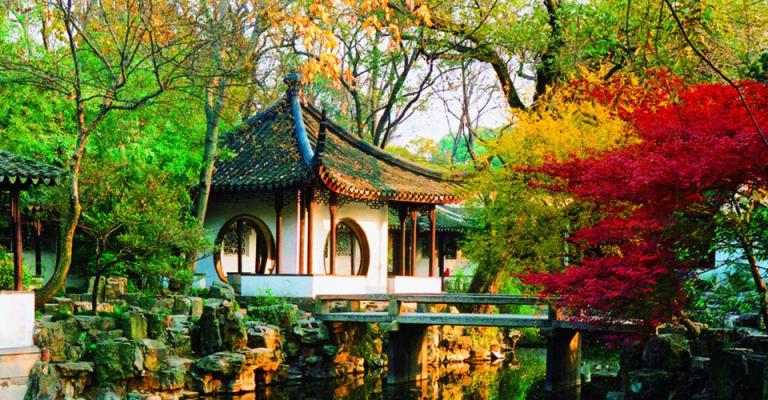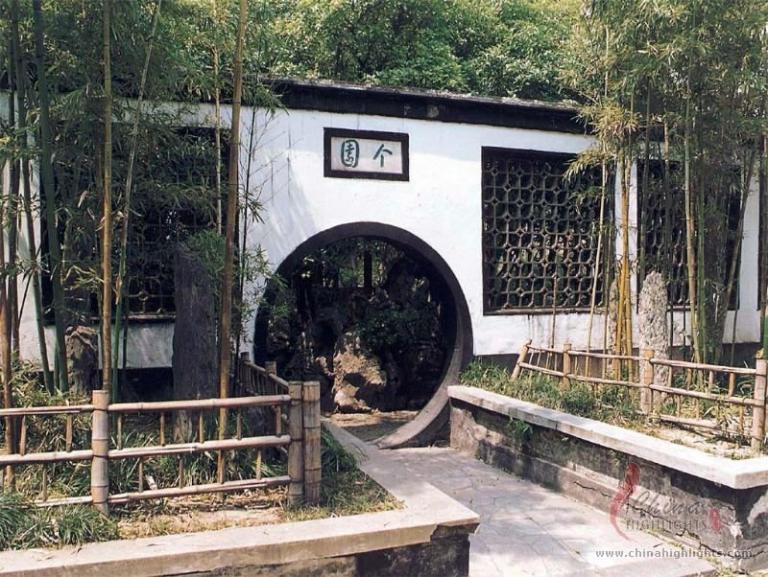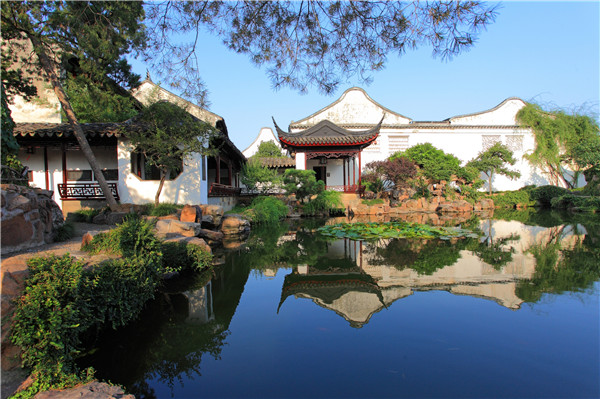Chinese Ancient Gardens
4 min readAncient Gardens
History of Chinese Gardens
Two main garden traditions in China evolved over time:the vast imperial gardens,emblematic of the power and wealth of the empire;and the scholar or literati gardens,built as retreats from the onerous world of officialdom.The earliest references to gardens in China are found in Zhou Dynasty records describing vast tracts of land to be reserved for hunting parks for kings and princes.Success in the hunt was a metaphor for a successful reign.Later,in the Songs of Chu,a 4th-century B.C.text,a shaman singer attempts to entice the soul of a dying king back to life with a description of the beauties of a garden with winding streams,lotus lakes,and distant views of the mountains.In the Shanglin park of China’s first emperor,Shi Huang Di,were countless animals,birds,and exotic plants gathered as tribute from vassal states,thus creating a living replica of his entire domain.Poets such as the famed Tao Yuanming(365-427)recorded in verse the pleasures of strolling though one’s garden.Both the Sui and Tang dynasties saw the further development of imperial and individual gardens.
Wang Wei(699-759)created his Wangchuan villa in Lantian County,Shaanxi,a rustic retreat immortalized in poetry and paintings for centuries as the epitome of the scholar’s retreat.
The Song Dynasty gave rise to the proliferation of urban literati gardens,and at Kaifeng,Song Huizong(1082-1135)erected the Gen Yue Mountain,an artificial construct approximately seventy-seven meters tall,including many famous garden rocks.Kublai Khan(1214-1294)of the Yuan Dynasty built at Beijing an extravagant city complete with lakes and hunting parks.The subsequent Ming Dynasty revised and embellished the Forbidden City withmyriad courtyards and gardens and developed the Park of the Sea Palaces,a vast complex of gardens and retreats for the imperial family.The most famous of the gardens of the Qing Dynasty was the imperial Yuanmingyuan,within the precincts of which were countless watercourses,pavilions,libraries,farms,training fields for the emperor’s soldiers,and European-style fountains and buildings.

Cosmology of Chinese Garden
The unique character of Chinese gardens has its roots in Chinese philosophy,most notablyDaoism.A garden was seen as a mirror of the natural world.Everything in the universe was created from a conduct for qi(vital energy,or life force).The universe was understood to be a combination of yin(female or negative)and yang(male or positive)elements in a state of constant fluidity.A balance of opposites in the construction of buildings,natural features,and plantings was a goal of the garden designer.Recreating the natural world in a garden was thought to replicate the benefits of immersing oneself in nature,a belief similar to ideas about the benefits of landscape painting. Scholars whose official duties prevented them from visiting the mountains could enjoy the benefits of nature in their own gardens. The ancient practice of fengshui (literally,”wind-water”, often translated as geomancy) consisted of situating homes, buildings, graves, and gardens properly in a landscape to receive the optimum benefit.
Traditional Chinese thought places humans as a small part of the infinite universe. Each living creature is a part of nature and the intrinsic link between humans and nature can’t be broken. Chinese gardens are an effort to imitate nature in their homes, to conform to naturewithout breaking this fundamental connection. Each part of the garden is meant to highlight and remind visitors of the harmony between humans and nature, with the goal of breeding harmony between character and emotion.
Imperial gardens symbolized the supreme power of emperors, but were also places of recreation. Private gardens were places of relaxation and contemplation,a sanctuary to satisfy people’s longing for nature. Regardless of geographic location or scale, Chinese gardens represent a Chinese tradition of finding harmony within the world by turning to nature.

Elements of the Garden
The two main elements of a garden are rocks and water, symbolizing the yang and yin, respectively. Traditional Chinese gardens are constructed in a series of walled outdoor courtyards, joined by walkways or doorways. Use of garden rocks(yang) at strategic locations within a garden brings to mind the mountain ranges and peaks of nature. Incorporation of a watercourse, pool, lake, or cascade adds the water(yin) and all its mutable forms. Plants are included for literary and cultural references, for seasonal suitability, and for aesthetic reasons, such as the beauty of their shadows against the light garden walls, or the harmony of the sound of wind and rain in their foliage. Buildings such as ting(pavilions with open sides), xie (gazebos), tang(formal halls), and covered walkways make accessible the featured sites in the gardens and the effects of the changing hours of the days and seasons.
Such garden structures are named with references to classical literature, and the addition of calligraphy adds another layer of appreciation to the garden. Often potted plants are placedin courtyards at the peak of their blooming seasons, and pools and lakes water lilies, lotus, and fish. Gardens also include rockeries that are constructed of aggregates of bizarrely shaped rocks made into miniature mountains or roofs for artificial caves, both symbolic of the entrance to the realms of immortals and useful as an escape from the heat of summer.
Yuan Zhi(The Craft of Gardens, datable to 1631-1634), written during the late Ming Dynasty by Ji Cheng, is considered the classic text on garden design. Encompassing both practical and aesthetic advice, the manual advises the garden designer to be sensitive to the proper use of contrasts and juxtapositions of elements and to seek the essence lying behind the forms.









